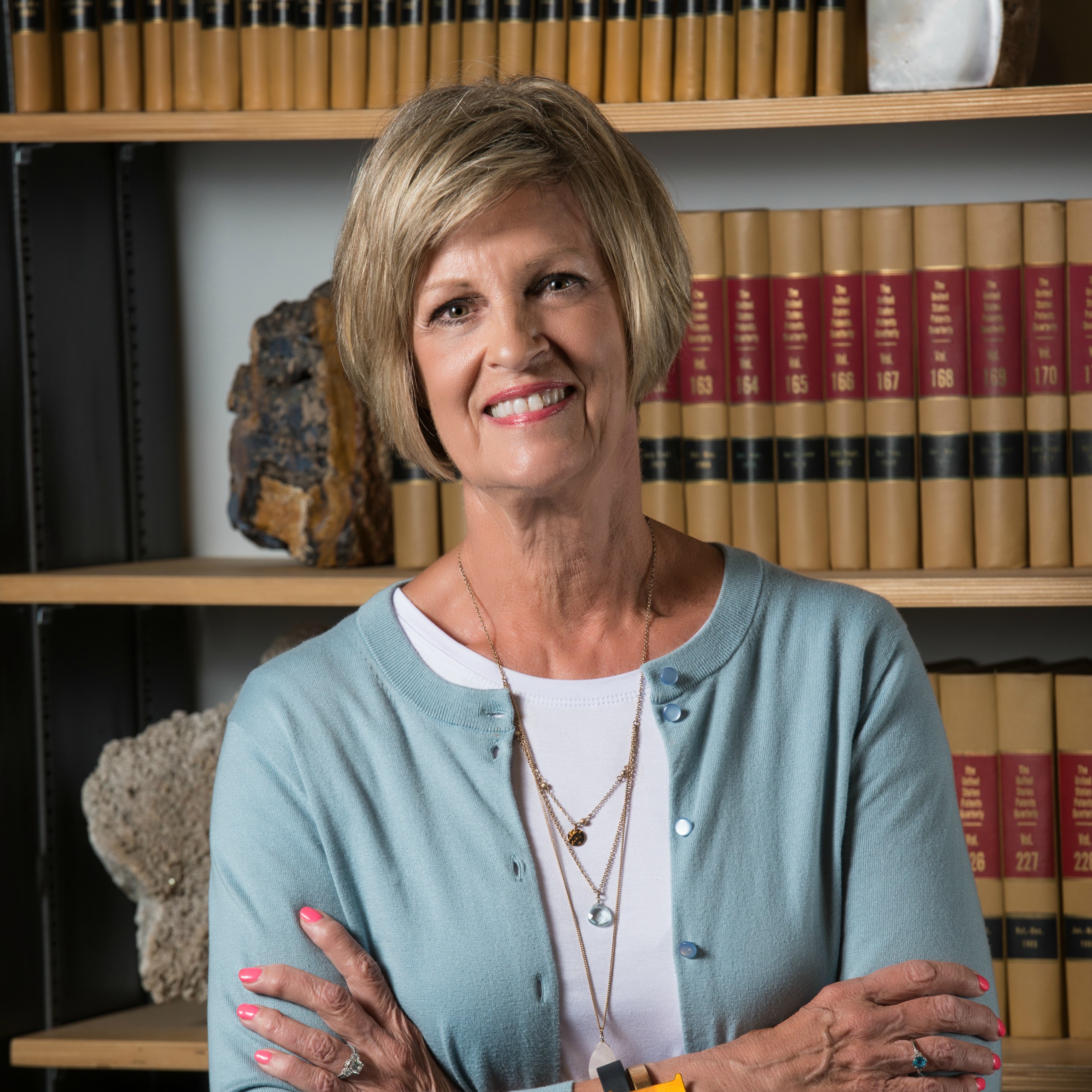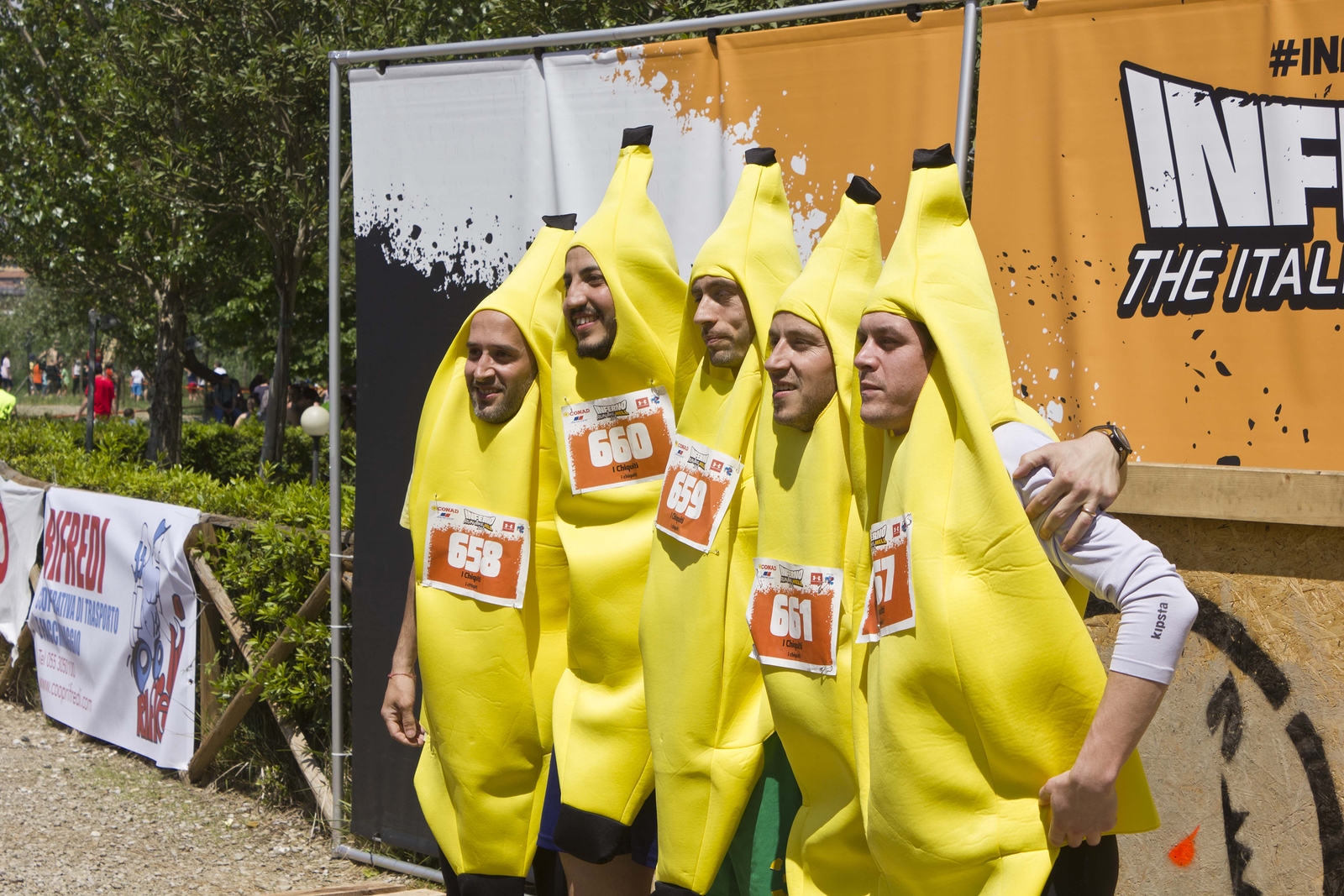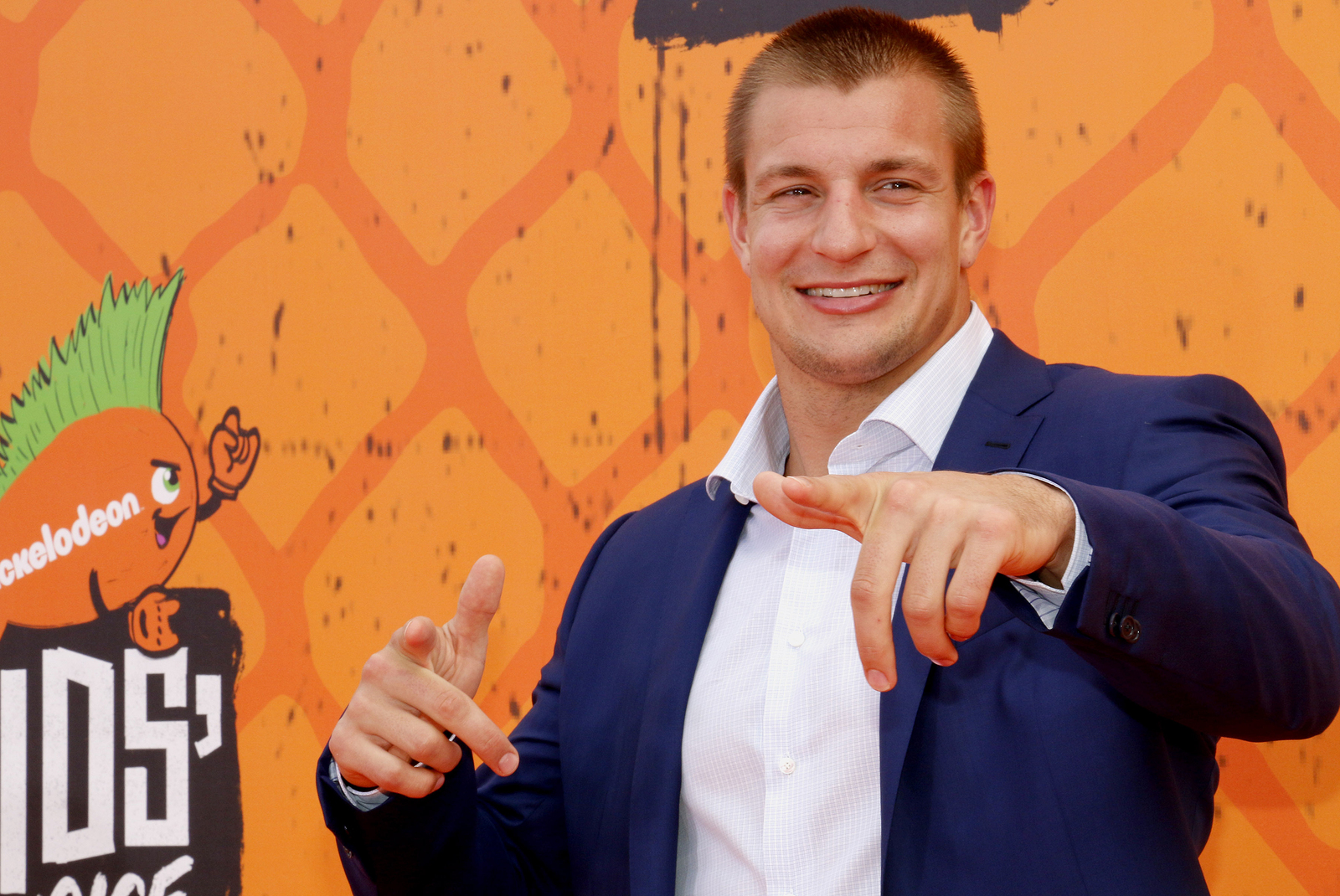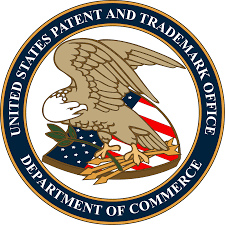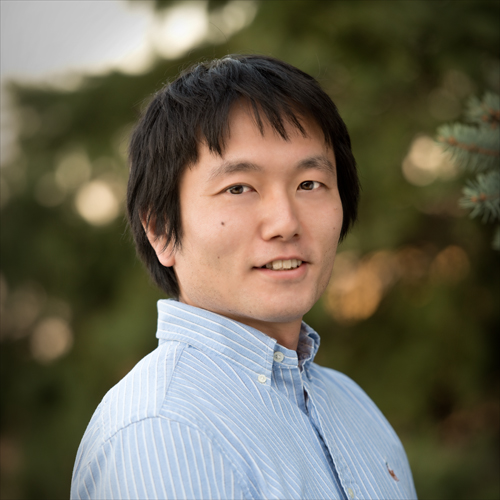Suiter Swantz IP Team Spotlight: Linda Dammann
At Suiter Swantz IP, we take great pride in providing our clients with the highest level of intellectual property representation and we recognize this would not be possible without our elite team of patent attorneys and staff. Each month we feature one of our team members and give you the opportunity to learn more about their experiences and background. This month it is our pleasure to introduce Linda Dammann.
Linda Dammann joined Suiter Swantz IP in 2017 as a paralegal for the Firm. Linda has over 25 years of experience in Intellectual Property, specializing in trademarks.
Linda’s expertise includes conducting availability searches, filing and monitoring trademarks with the United States Patent and Trademark Office and in several foreign countries.
How did you get into IP?
I started my IP career as an IP secretary and then trained to become a paralegal. I’ve now worked in IP for over 20 years, specializing in trademarks. I find trademark work to be challenging and interesting, stretching me professionally.
What do you like most about working at Suiter Swantz?
I truly enjoy working in a smaller intellectual property firm, with supportive and knowledgeable colleagues.
Where did you grow up?
I grew up in Manning, Iowa. It is a small farming community about 90 miles northeast of Omaha. My parents owned a feed and hatchery business that kept our family quite busy. This is where my siblings and I learned the value of hard work and family support.
What do you do outside the office?
Family is very important to me and I am very lucky to have my two children, Michael and Melissa, here in Omaha so family gatherings are quite often. I keep busy by traveling with my husband of 47 years, golfing with my son, shopping at local boutiques with my daughter, and watching my two beautiful grandchildren.
Halloween Patent: Combination Lighting Device
Robert S. Blake was granted a patent for a COMBINATION LIGHTING DEVICE. U.S. Patent No. 6,428,178. This Halloween device can use either a necklace or a necktie to display lights on the outside and inside of a pumpkin.
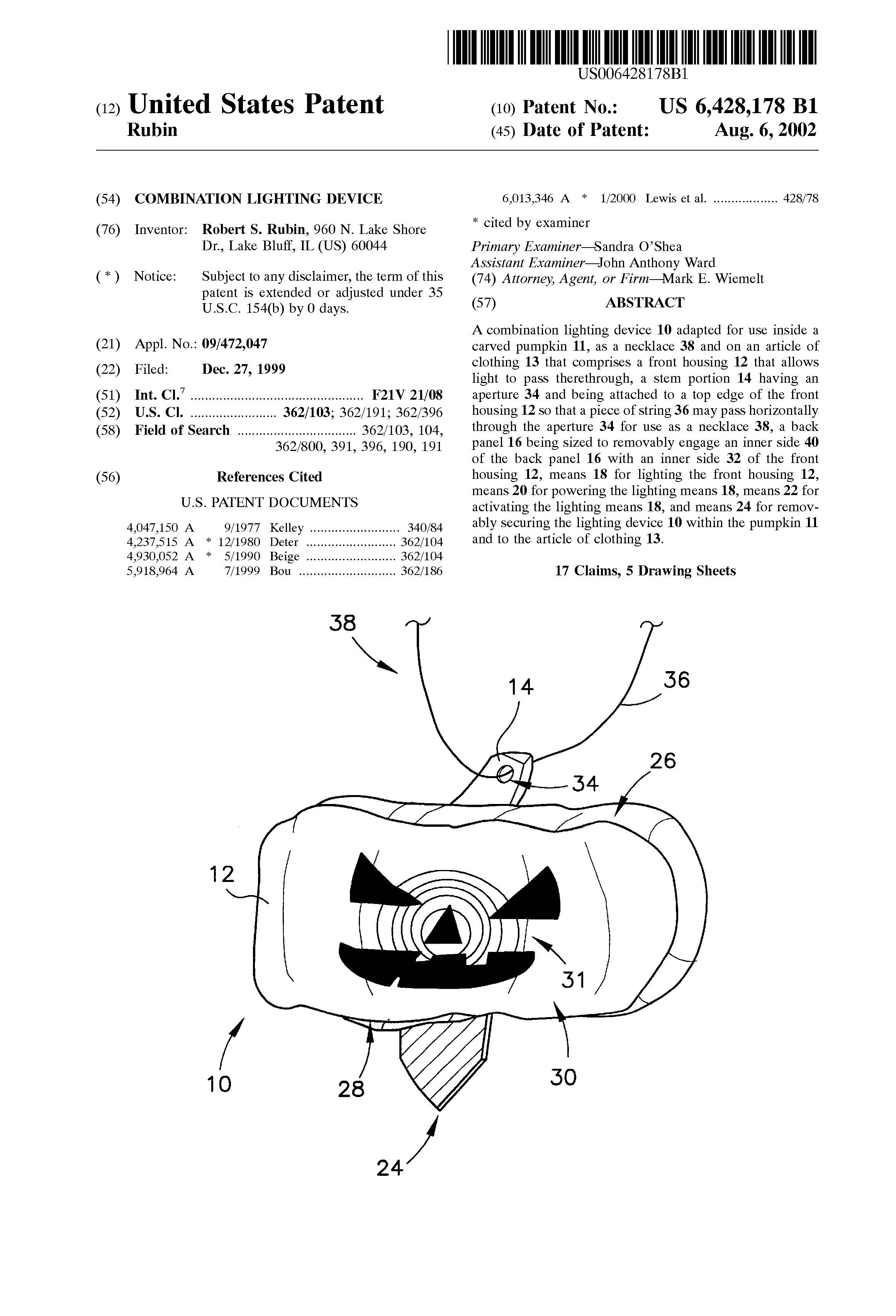
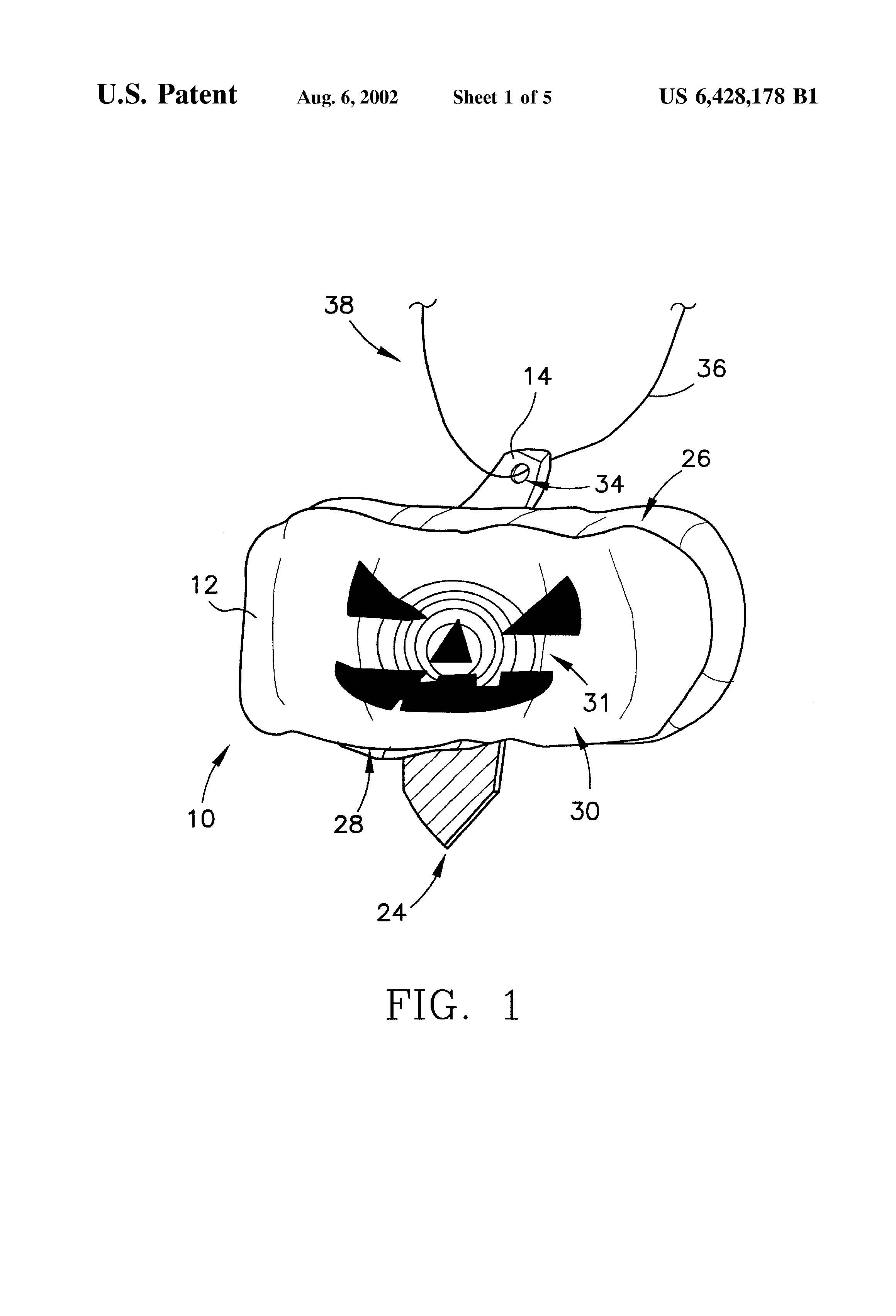
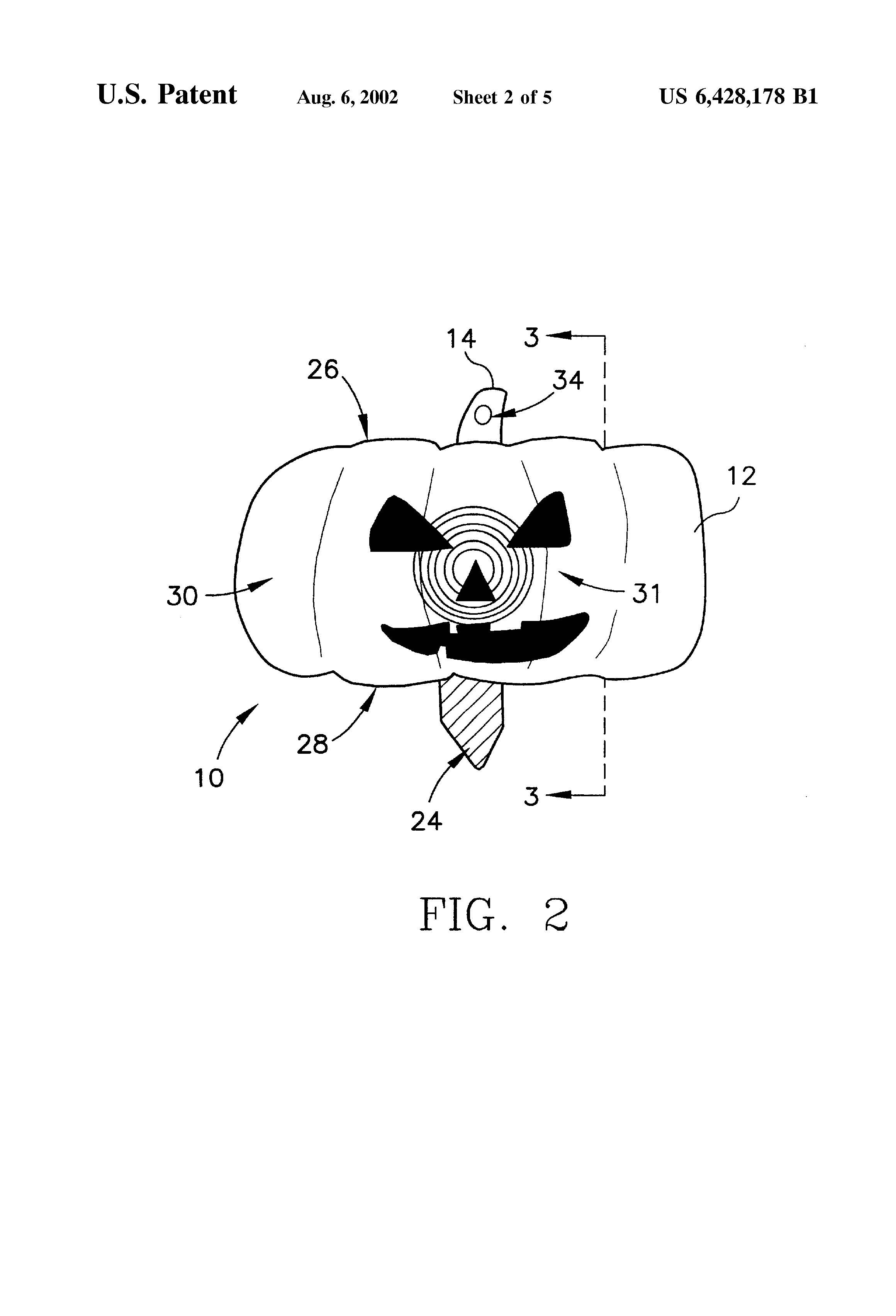
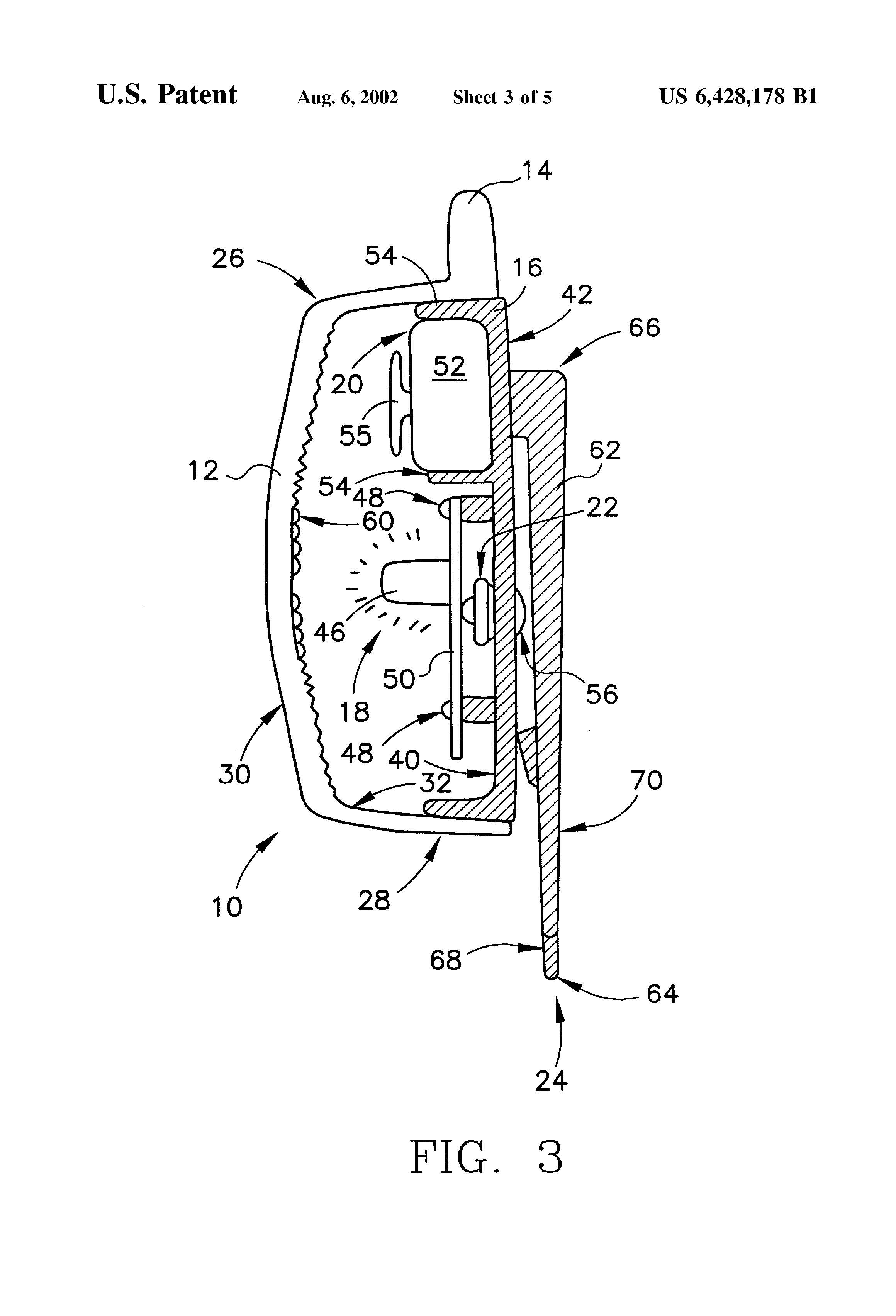
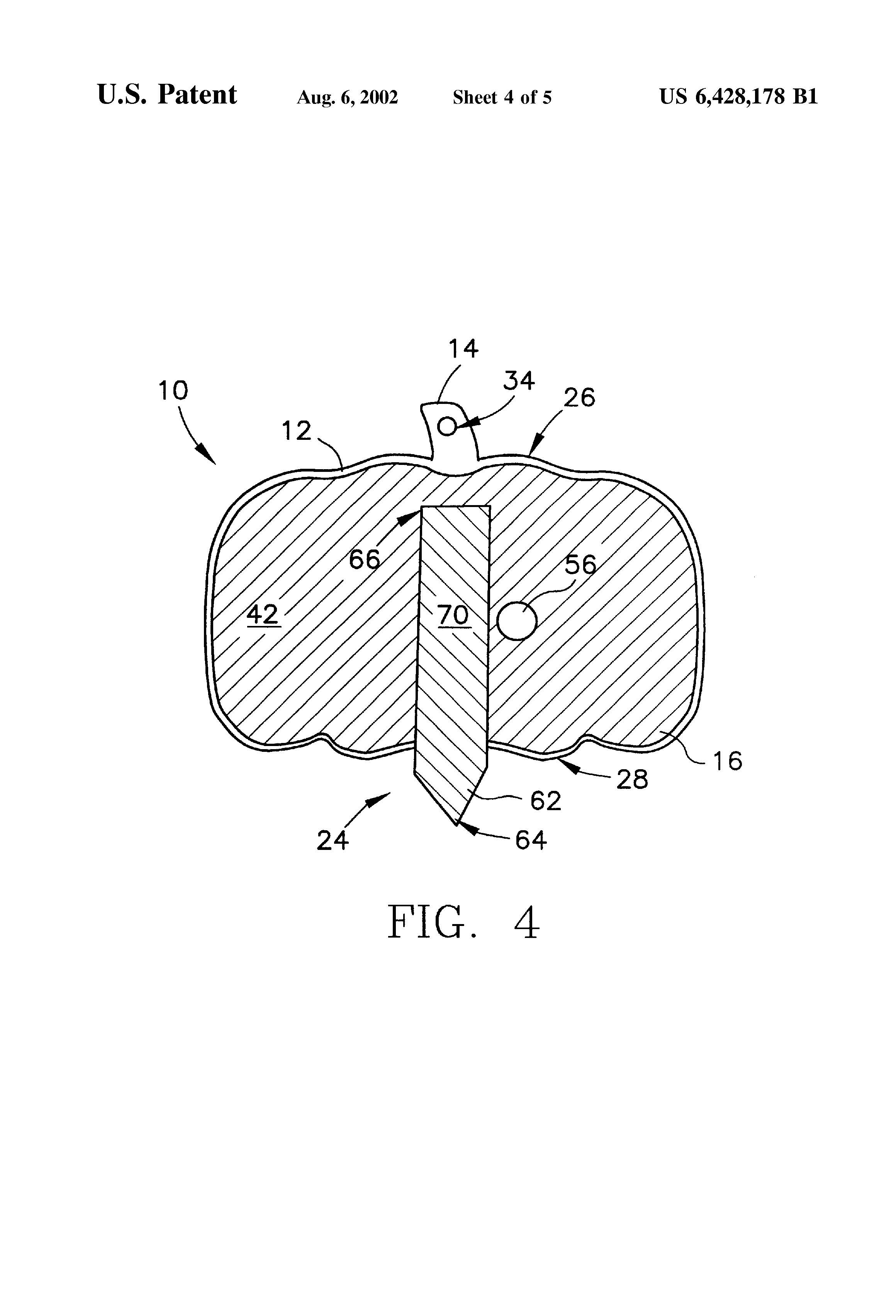
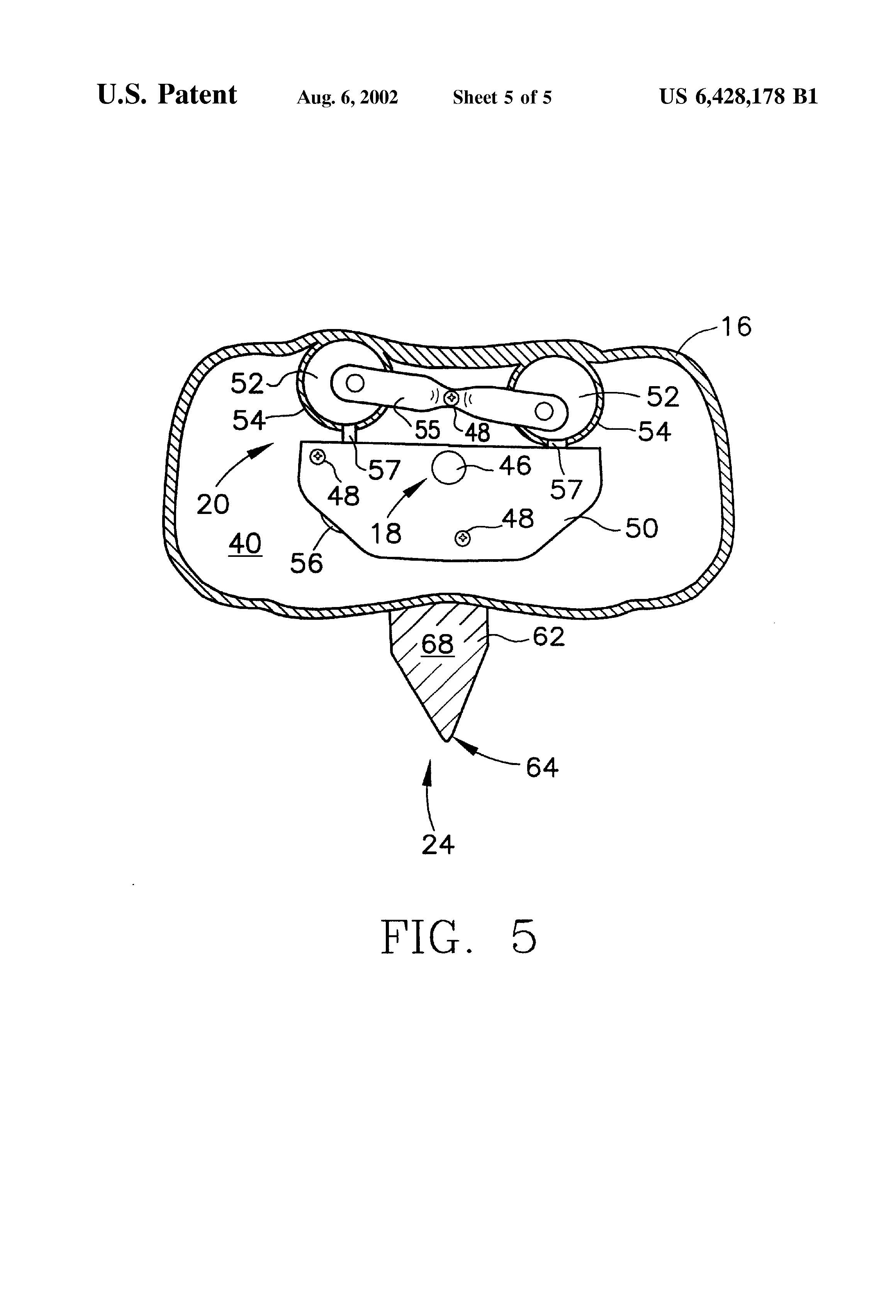
Apple Pay Accused of Violating Patents
In a lawsuit filed in a Federal District Court in Delaware, Apple and Visa have been accused of violating four patents of Universal Secure Registry, a small Boston company, through the launch of Apple Pay. Universal Secure Registry CEO, Kenneth Weiss, received 13 patents for an authentication system that uses a smartphone’s biometric identification, such as a fingerprint, and the generation of secure one-time tokens to conduct financial transactions. Weiss claims that he “was first in the space, and the secure payment technology that he developed goes right to the core of Apple Pay.”
Universal Secure Registry is seeking unspecified damages, but as Apple Pay increases in popularity, a ruling against these companies could cause a significant loss. Universal Secure Registry is also suggesting that Apple and Visa took advantage of their efforts to describe the patented technology when pursuing partnerships with them.
In 2010, realizing the promise of Universal Secure Registry’s new patented technology, Weiss approached Apple and Visa in an attempt to partner with the companies to develop commercial implementation of the technology. Weiss reached out to both corporations with letters and meeting requests to discuss his cutting-edge technology. After they agreed to a 10-year nondisclosure agreement, Visa met with Universal Secure Registry where they were presented details of the patented technology. Visa assigned engineers to fully understand the details of the technology, but they dropped further communications with Universal Secure Registry without securing a license. Apple never responded to communication efforts from Weiss.
Three years later, Visa began to work on Apple Pay technology with Apple, MasterCard, and American Express. According to the lawsuit, Visa dedicated approximately 1,000 people to the project. Users of Apple Pay enroll a credit card on their phone and use the iPhone’s touch ID sensor to pay a merchant that has installed a wireless terminal. The terminal receives a signal from the phone, accepts the payment, and the transaction is then complete.
After the release of Apple Pay, Universal Secure Registry did not seek a license agreement or royalties from Apple or Visa because patent specialists advised the company to file the suit first. Quinn Emmanuel, who is filing the Apple Pay suit on behalf of Universal Secure Registry, also represented Samsung Electronics in some of their long-running patent litigation with Apple over software in its Android-based smartphones.
Universal Secure Registry has also tried to license its technology to larger firms without success and is now building its own device for secure wireless authentication. Weiss says his goal is to invent payment technologies that he can license to other companies. He is hopeful that he, Apple, and Visa can come to some kind of arrangement.
Apple and Visa have not commented on the suit.
Suiter Swantz IP is a full-service intellectual property law firm, based in Omaha, NE, serving all of Nebraska, Iowa and South Dakota. If you have any intellectual property questions or need assistance with any patent, trademark, or copyright matters and would like to speak to one of our patent attorneys please contact us.
Congratulations to Troy Anderson
Suiter Swantz IP would like to congratulate our Troy Anderson on being presented with the Silver Quill award from the Nebraska State Bar Association. The Silver Quill Award recognizes outstanding legal writing ability. Recipients receive a $500 award and have their names engraved on the Silver Quill Award Plaque.
Troy was also presented with the McGrath North Excellence in Legal Writing Award. This award recognizes the student in each small group of the first year Legal Research and Writing course who had the best performance in his or her section.
Patent of the Week: Caramel Apple Machinery
Suiter Swantz IP takes a look back at past inventions and inventors with our Patent of the Week.
This week we look at a fall favorite, caramel apples. Caramel apples were created as an experiment with leftover candy. In the 1950s, Dan Walker, a Kraft Foods sales representative had an excess of caramel candy from Halloween. He decided to melt the caramels down and add apples to it. The addition of the apples was a hit and from there the caramel apple was born.
For the first decade or so caramel apples were made by hand until Harry Pikal of Bangor, Michigan, and Vito Raimondi and his uncle William Raimondi, from Chicago, Illinois invented and patented automated caramel apple dipping machines. Pikal’s machine, MACHINE FOR COATING APPLES ON STICKS was granted a patent on May 15, 1956 (U.S. Patent No. 2,745,374). An excerpt from the patent says:
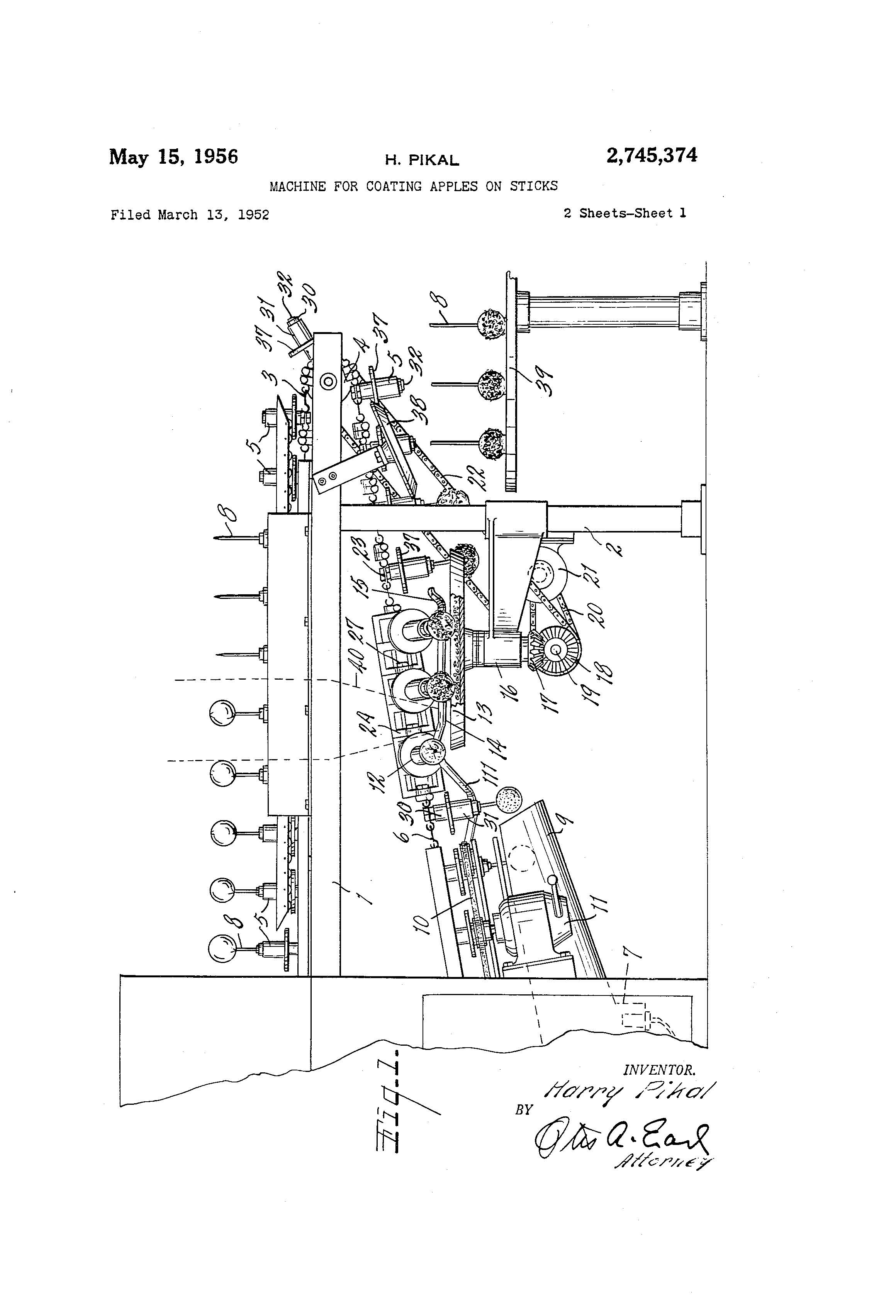 The principle objects of this invention are:
The principle objects of this invention are:
First, to provide a machine which will automatically coat apples with a coating of caramel or other sticky confection and thereafter apply a layer of a comminuted comestible such as crushed nuts.
Second, to provide a machine which will remove excess confection coating from a freshly coated apple and immediately thereafter subject the apple and the coating to a supply of comminuted comestible to cause the comestible to adhere to the coating while it is still in sticky condition and well adapted to receive the comestible.
Third, to provide an apple coating machine which will translate apples on sticks through a heated dip bath of caramel and immediately spin off excess caramel and thereafter quickly deposit the apples in a rolling position on a table covered with comminuted comestibles such as crushed nuts so that the apples are rolled across the layer of nuts while the caramel coating is still in sticky condition.
The Raimondi family invented and were granted a patent on May 2, 1972, for COATED APPLE CONFECTION MAKING MACHINE (U.S. Patent No. 3,660,118). An excerpt from their patent says:
A cyclically operated coated apple confection making machine includes a handle stick storage hopper from which handle sticks are discharged one at 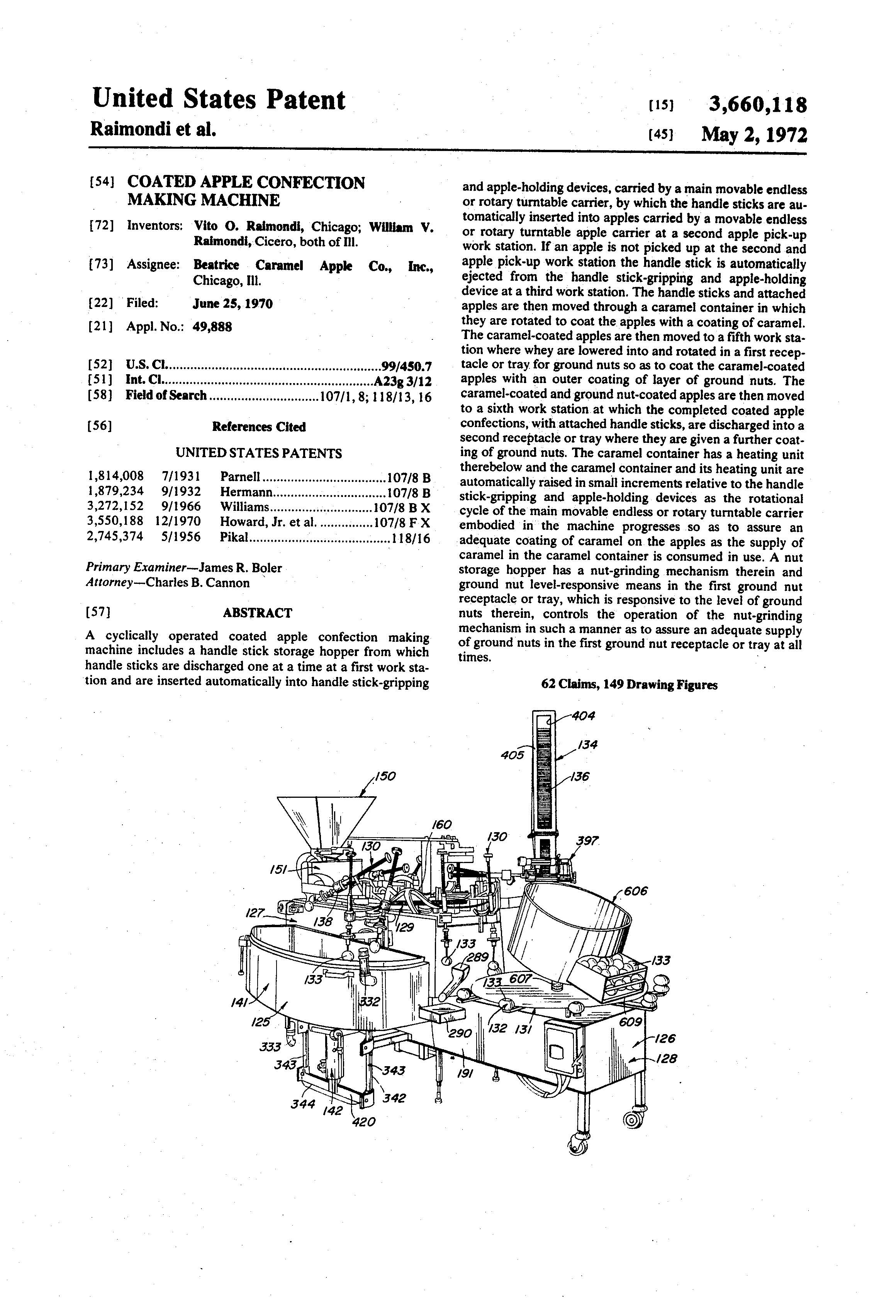 a time at a first work station and are inserted automatically into handle stick-gripping and apple-holding devices, carried by a main movable endless or rotary turntable carrier, by which the handle sticks are automatically inserted into apples carried by a movable endless or rotary turntable apple carrier at a second apple pick-up work station… The handle sticks and attached apples are then moved through a caramel container in which they are rotated to coat the apples with a coating of caramel. The caramel-coated apples are then moved to a fifth work station where they are lowered into and rotated in a first receptacle or tray for ground nuts so as to coat the caramel-coated apples with an outer coating of layer of ground nuts.
a time at a first work station and are inserted automatically into handle stick-gripping and apple-holding devices, carried by a main movable endless or rotary turntable carrier, by which the handle sticks are automatically inserted into apples carried by a movable endless or rotary turntable apple carrier at a second apple pick-up work station… The handle sticks and attached apples are then moved through a caramel container in which they are rotated to coat the apples with a coating of caramel. The caramel-coated apples are then moved to a fifth work station where they are lowered into and rotated in a first receptacle or tray for ground nuts so as to coat the caramel-coated apples with an outer coating of layer of ground nuts.
Suiter Swantz IP is a full-service intellectual property law firm, based in Omaha, NE, serving all of Nebraska, Iowa and South Dakota. If you have any intellectual property questions or need assistance with any patent, trademark, or copyright matters and would like to speak to one of our patent attorneys please contact us.
This Copyright Suit is Bananas!
Halloween is right around the corner, hand-in-hand with the purchase of candy and other Halloween accoutrements is the purchase of costumes. Halloween is a big money maker for retailers. It is estimated Americans will spend $9.1 billion on Halloween-related items this year, $3.4 billion of that will be spent on costumes alone.
One costume, almost guaranteed to be seen this Halloween season, is the banana costume. The bright yellow ensemble with cutouts for the face and arms is a Halloween staple, and for one company, Rasta Imposta, a large part of their revenue. Kmart has purchased the banana costume from Rasta Imposta since 2008. This year the two companies failed to reach an agreement and Kmart decided to go with another vendor to fill the banana suit void.
Upon hearing Kmart was going with another vendor Rasta Imposta sued Kmart Corp., and its parent company, Sears Holding Corp., for copyright infringement, trade dress infringement, and unfair competition. According to Rasta Imposta the “infringing” costume is a “direct replication and knockoff of [their] copyrighted Banana Design” and “Kmart is not free to simply appropriate Rasta Imposta's intellectual property for its own business advantage without Rasta Imposta’s consent.” Rasta Imposta is seeking damages and injunctive relief.
Rasta Imposta started selling the banana costume in 2001 and in 2010, they obtained Copyright Registration No. VA 1-707- 439 for their design. Due to the costume’s successful sales, the company decided to license the banana suit and consider it to be one of their most important costumes.
According to the complaint the new costume Kmart is selling “has the same shape as the Banana Design, the ends of the banana are placed similarly, the vertical lines running down the middle of the banana are placed similarly, the one-piece costume is worn on the body the same way as the Banana Design, and the [cut-out] holes are similar.”
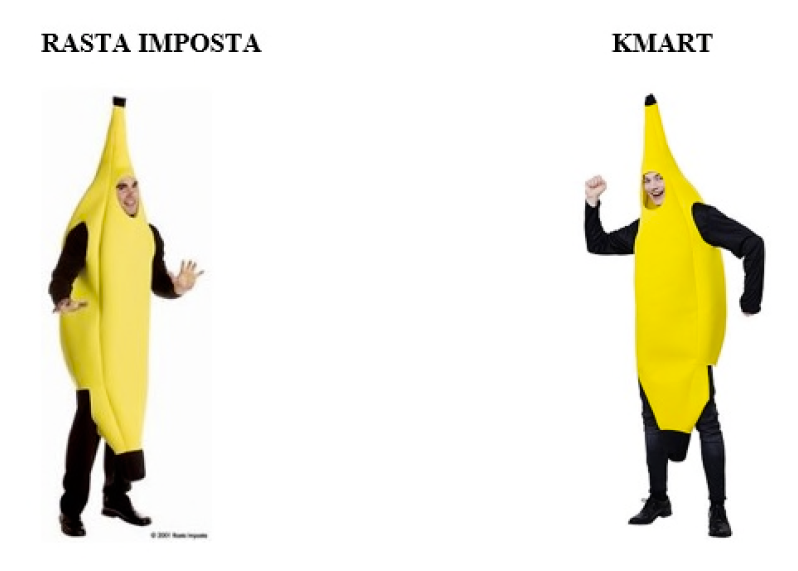
Some would argue this case is a hard sell as there is no originality in a banana; a banana’s elements are what they are and cannot be copyrighted because those characteristics are what a banana naturally looks like; Rasta Imposta did not create that look.
Due to a recent Supreme Court Ruling we previously wrote about, copyright on clothing, uniforms, etc., is not that black and white. In Star Athletica, L.L.C. v. Varsity Brands, Inc., the Supreme Court found that the design feature of a cheerleading uniform is separate from the uniform itself and is protectable under the Copyright Act. Justice Clarence Thomas who authored the majority opinion stated:
“We hold that an artistic feature of the design of a useful article is eligible for copyright protection if the feature (1) can be perceived as a two- or three-dimensional work of art separate from the useful article and (2) would qualify as a protectable pictorial, graphic, or sculptural work either on its own or in some other medium if imagined separately from the useful article.”
A question that will need to be answered in the Rasta Imposta case is whether or not their banana costume design adds enough originality over other banana costumes to warrant copyright protection.
The case is Silvertop Associates Inc d/b/a Rasta Imposta v Kmart Corp et al, U.S. District Court, District of New Jersey, No. 17-07499.
Suiter Swantz IP is a full-service intellectual property law firm, based in Omaha, NE, serving all of Nebraska, Iowa and South Dakota. If you have any intellectual property questions or need assistance with any patent, trademark, or copyright matters and would like to speak to one of our patent attorneys please contact us.
Gronkowski Sued by Nike over “Spikeman” Logo
Most of those familiar with the National Football League (NFL) are also familiar with the winners of the 2017 Super Bowl, the New England Patriots. One of the most outspoken and recognizable players on the New England Patriots is number 87; tight end Rob Gronkowski. Gronkowski is well known for his love of partying and his “Gronk Spike,” the famous celebratory football spike after a touchdown. Gronkowski has taken the famous spike a step further by having his company Gronk Nation L.L.C., file a trademark registration application for an image/logo of him spiking the football, referred to as the Spikeman logo. The Spikeman logo is to be associated with Gronkowski’s Gronk Fitness® website for the sale of clothing and exercise equipment. The Spikeman logo is also to be associated with Gronkowski’s personal party bus called “Gronk Bus.”
Gronkowski filed a trademark registration application for his logo in late 2016. The United States Patent and Trademark Office approved the trademark registration application for publication. Unfortunately, for Gronkowski, Nike feels his logo is a bit too similar to that of their famous Michael Jordan “Jumpman” logo which depicts a silhouette of Michael Jordan in the air dunking a basketball. Nike has used the Michael Jordan Jumpman logo since November of 1987. Nike filed an opposition with the United States Patent and Trademark Office (USPTO) opposing the trademark registration approval of the Spikeman logo.
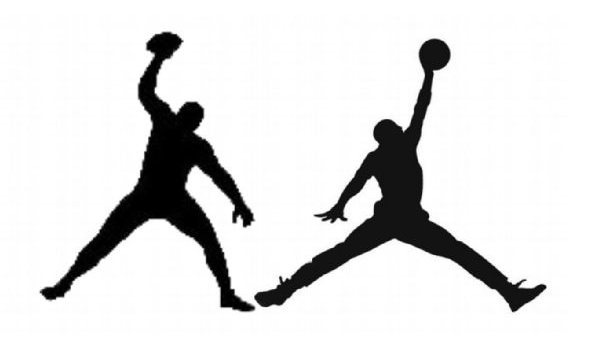
Troy Carnrite, attorney for Gronkowski, feels that his “client has created one of the most recognizable brands in sports today. We are very proud of this brand and are optimistic that we will resolve this with Nike amicably."
There are rumors as to what the filing of the trademark registration application for the Spikeman logo means for the relationship between Gronkowski and Nike. Not only has Gronkowski appeared in commercials for Nike, the company also released a signature shoe for him last year. On the field, Gronkowski wears Nike cleats and the uniform he wears also displays the signature Nike swoosh.
Although anyone could potentially file a trademark for their logo, the problem enters when the new trademark is similar to an existing trademark in such a way that would lead to a likelihood of consumer confusion. Nike feels the similarities between the two logos is too close and would cause such confusion. A spokesperson for Nike stated they “hope to work this out to everyone's satisfaction."
Suiter Swantz IP is a full-service intellectual property law firm, based in Omaha, NE, serving all of Nebraska, Iowa and South Dakota. If you have any intellectual property questions or need assistance with any patent, trademark, or copyright matters and would like to speak to one of our patent attorneys please contact us.
USPTO as an Independent Agency?
On Friday September 29, 2017, the House Budget Committee issued a 63-page, non-binding budget plan named, Building a Better America: A Plan for a Fiscal Responsibility. One of the proposed items in the proposal is the transformation of the United States Patent and Trademark Office (USPTO) into an independent agency.
Although not descriptive, the proposal states, “[t]his budget recommends the following dissolution, delegation of authority, and consolidation measures… Establish the U.S. Patent and Trademark Office as an independent agency.” See p. 50 of the Proposal. While no specifics related to the suggested change were provided in the proposal, the document did state “[t]he Department of Commerce and its various agencies and programs are rife with waste, abuse, and duplication.”
Q. Todd Dickinson, former Director of the USPTO, is in favor of the change. Dickinson stated, “[t]his is a very good idea, making it similar to NASA or the GSA. This was basically the intent of the American Inventor Protection Act back in 1999.” He believes there will be a lot of advantages to this, one of which being the USPTO could potentially separate itself from the problem of fee diversion. The separation could also avoid the “shared services” requirement within the Department of Commerce (DOC). “Shared services” have been a point of contention with many in the USPTO as they are paying for services the agency does not and will not use.
According to the USPTO’s website they are “the federal agency for granting U.S. patents and registering trademarks. The USPTO advises the president of the United States, the secretary of commerce, and U.S. government agencies on intellectual property (IP) policy, protection, and enforcement; and promotes the stronger and more effective IP protection around the world. The USPTO furthers effective IP protection for U.S. innovators and entrepreneurs worldwide by working with other agencies to secure strong IP provisions in free trade and other international agreements.”
Suiter Swantz IP is a full-service intellectual property law firm, based in Omaha, NE, serving all of Nebraska, Iowa and South Dakota. If you have any intellectual property questions or need assistance with any patent, trademark, or copyright matters and would like to speak to one of our patent attorneys please contact us.
Suiter Swantz IP Team Spotlight: Kaz Toyama
At Suiter Swantz IP, we take great pride in providing our clients with the highest level of intellectual property representation and we recognize this would not be possible without our elite team of patent attorneys and staff. Each month we feature one of our team members and give you the opportunity to learn more about their experiences and background. This month it is our pleasure to introduce Kaz Toyama.
Kazuya (Kaz) Toyama is a patent agent with Suiter Swantz IP and holds a Ph.D. in Chemistry. Kaz obtained his B.S. in Chemistry from St. Francis College. While attending St. Francis, he researched tangential purification methods for Green Fluorescent Protein (GFP) as a visiting researcher at Princeton University. Kaz went on to receive his Ph.D. in Chemistry from the University of Nebraska. His research focused on the development of new asymmetric catalysts and total synthesis of natural products. Prior to Ph.D. work at the University of Nebraska-Lincoln, Kaz worked as a research scientist with Bayer Chemical to improve the quality of polyurethane foam. During his years of research, Kaz gained hands on experience in a broad range of analytical instruments and techniques.
How did you get into patent law?
My interest in patent law started before applying to the Ph.D. program at the University of Nebraska. At that time, I was working for a manufacturing company and my supervisor was an organic chemist and an inventor listed on several chemical patents. He enthusiastically told me interesting stories about the relationship between research, patents, and business strategy. I love learning new aspects of science, engineering, and technology, so following the completion of Ph.D. I jumped at the opportunity to be involved with patent law.
What do you like most about working at Suiter Swantz?
I enjoy learning inventions in various fields. The best part of my job is that I get to see the finished products ready to be on the market without any experiments on my part. This is both satisfying and stimulating, since I, as a researcher, understand how much effort goes into developing each invention and I, as a patent agent, have a privilege to protect valuable inventions.
What is one of the biggest challenges you’ve faced professionally?
Transitioning from a researcher to a patent agent was one of the biggest challenges I have faced professionally as I had never been exposed to the legal field prior to joining Suiter Swantz IP.
Where did you grow up?
I was born and raised in a country side of Niigata (200 miles north of Tokyo) Japan and came to the United States for college. To provide a frame of reference, my hometown and Omaha are about the same size in population.
As a child what did you want to do/be when you grew up?
I have watched many TV shows featuring medical doctors so naturally I wanted to be a medical doctor. However, as I progressed through schoo, I found myself interested more in expanding the existing boundary of science, which ultimately led me to chemistry.
Patent of the Week: John Deere Farm Equipment and Machinery
Suiter Swantz IP takes a look back at past inventions and inventors with our Patent of the Week.
Now that fall is upon us and harvest is in full swing tractors and other farm machinery can be seen working night and day. One of the most recognizable tractors and farm equipment companies is John Deere®.
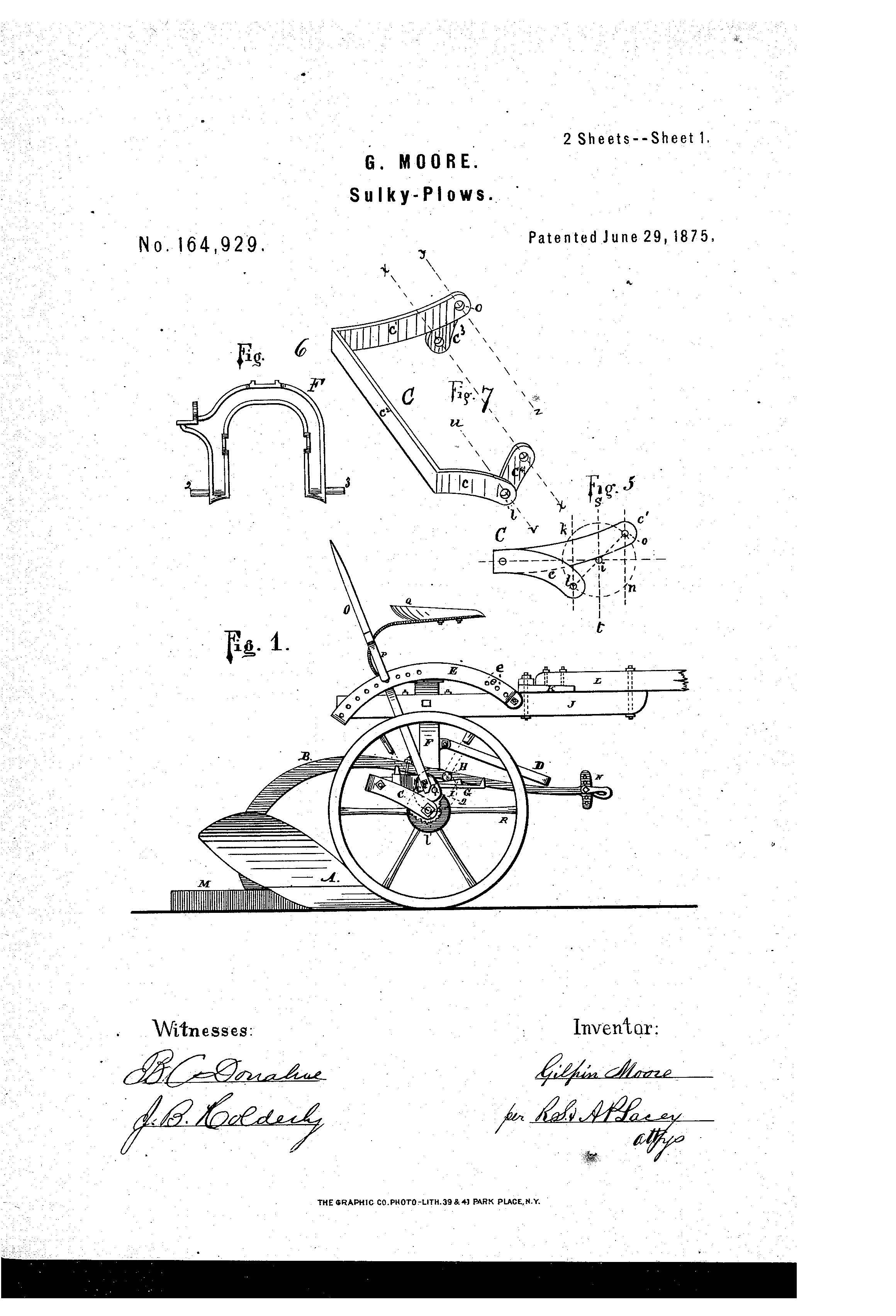 John Deere’s history began in 1837 in Grand Detour, Illinois, when John Deere created a polished-steel plow that allowed for farmers to cut clean furrows in the rough soil. From there, the company’s history and empire began. One of the first patents John Deere received was in 1864 for, IMPROVEMENT IN MOLDS FOR CASTING STEEL PLOWS (U.S. Patent No. 41,203). In 1875, Gilpin Moore developed a plow for the company knows as the “Gilpin Sulky Plow”. This plow allowed for farmers to get off their feet and in a seat; it was John Deere’s most successful product in the 19th century SULKY PLOWS (U.S. Patent No. 164,929).
John Deere’s history began in 1837 in Grand Detour, Illinois, when John Deere created a polished-steel plow that allowed for farmers to cut clean furrows in the rough soil. From there, the company’s history and empire began. One of the first patents John Deere received was in 1864 for, IMPROVEMENT IN MOLDS FOR CASTING STEEL PLOWS (U.S. Patent No. 41,203). In 1875, Gilpin Moore developed a plow for the company knows as the “Gilpin Sulky Plow”. This plow allowed for farmers to get off their feet and in a seat; it was John Deere’s most successful product in the 19th century SULKY PLOWS (U.S. Patent No. 164,929).
In 1876, the company moved to Moline, Illinois and was producing over 60,000 plows a year. With this increase in productivity the company felt there was an obvious need for a trademark. Later  that year John Deere registered the “leaping deer” logo that depicts a deer leaping over a log. In 1912 John Deere registered for a second trademark that had more detail, definition, and incorporated the slogan “The Trade Mark of Quality Made Famous by Good Implements”. In 1936 the company obtained another trademark as they decided to expand on their logo creating one that could easily be stenciled on to products. As styles change so did the logo, their most current trademarked logo (U.S. Registration No. 2,580,000) changed the appearance of the deer; it is now leaping upward instead of landing.
that year John Deere registered the “leaping deer” logo that depicts a deer leaping over a log. In 1912 John Deere registered for a second trademark that had more detail, definition, and incorporated the slogan “The Trade Mark of Quality Made Famous by Good Implements”. In 1936 the company obtained another trademark as they decided to expand on their logo creating one that could easily be stenciled on to products. As styles change so did the logo, their most current trademarked logo (U.S. Registration No. 2,580,000) changed the appearance of the deer; it is now leaping upward instead of landing.
 Not only has John Deere trademarked their logo, the company also trademarked their signature “John Deere Green” and “John Deere Agricultural Yellow” color schemes. In early 1982 Deere tried to block a competitor from using the colors green and yellow on tractor attachments. Unfortunately, the court did not side with John Deere and held that because consumers wanted their tractor accessories to match their tractor, the use of green and yellow was functional. John Deere persisted and applied for different green and yellow layouts on machines. In 1985 the application was again denied based on aesthetic functionality. The company persisted, appealed, and eventually in 1988 Reg. Nos. 1,254,339; 1,502,103; 1,503,576 were allowed.
Not only has John Deere trademarked their logo, the company also trademarked their signature “John Deere Green” and “John Deere Agricultural Yellow” color schemes. In early 1982 Deere tried to block a competitor from using the colors green and yellow on tractor attachments. Unfortunately, the court did not side with John Deere and held that because consumers wanted their tractor accessories to match their tractor, the use of green and yellow was functional. John Deere persisted and applied for different green and yellow layouts on machines. In 1985 the application was again denied based on aesthetic functionality. The company persisted, appealed, and eventually in 1988 Reg. Nos. 1,254,339; 1,502,103; 1,503,576 were allowed.
In 1995 the Supreme Court made a landmark decision regarding color and trademark. They held that a single color could be protected as a trademark. Following this decision, in 2004, it was held that Deere could not simply have rights in every abstract combination of green and yellow on machinery. However, they could protect their rights regarding specific color layouts on specific areas of equipment. Since this decision, Deere has gained a number of trademark registrations regarding color combinations on specific machines
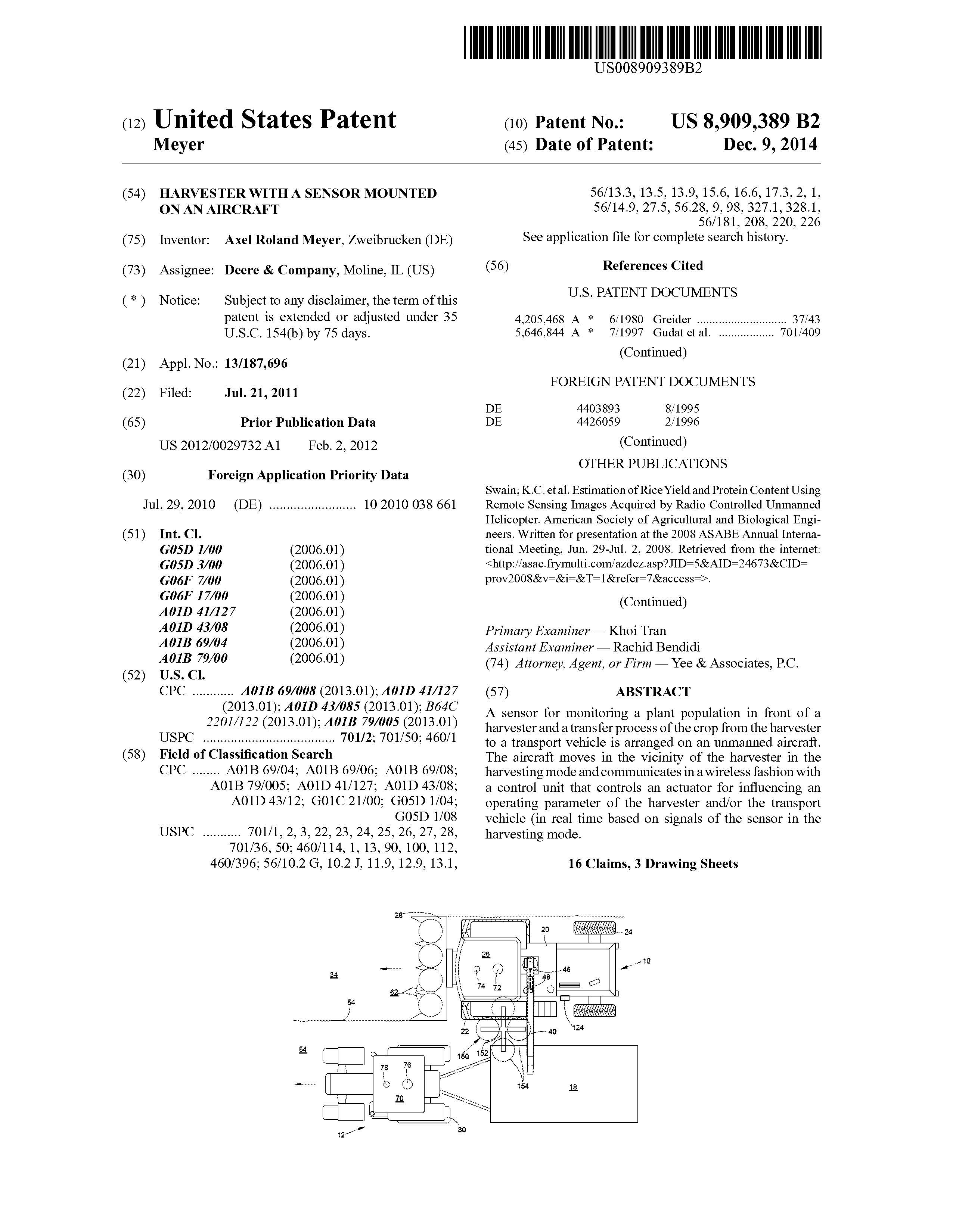 John Deere has grown exponentially since their inception and are recognized for their innovative and technologically advanced machinery and equipment. A couple examples of those advanced items are BATTERY ELECTRIC HYBRID DRIVE FOR A COMBINE HARVESTER (U.S. Patent No. 8,897,943), and HARVESTER WITH A SENSOR MOUNTED ON AN AIRCRAFT (U.S. Patent No. 8,909,389).
John Deere has grown exponentially since their inception and are recognized for their innovative and technologically advanced machinery and equipment. A couple examples of those advanced items are BATTERY ELECTRIC HYBRID DRIVE FOR A COMBINE HARVESTER (U.S. Patent No. 8,897,943), and HARVESTER WITH A SENSOR MOUNTED ON AN AIRCRAFT (U.S. Patent No. 8,909,389).
Suiter Swantz IP is a full-service intellectual property law firm, based in Omaha, NE, serving all of Nebraska, Iowa and South Dakota. If you have any intellectual property questions or need assistance with any patent, trademark, or copyright matters and would like to speak to one of our patent attorneys please contact us.
Chad Swantz to Mentor at Breakthrough Weekend 9/30
Our own Chad Swantz will be participating as a mentor in Breakthrough Weekend: A 54 hour startup experience. This unique event allows innovative and motivated people who want to turn an idea into a startup to pitch their idea, form a team, and start a business in only 54 hours.
Chad will be available Saturday to provide information regarding intellectual property and its purpose/value for startups.
The event will be Fri, Sep 29, 2017, 5:00 PM – Sun, Oct 1, 2017, 8:00 PM at Mammel Hall on UNO's Scott Campus. To see a full list of the weekend's events or to register click here.
Mammel Hall
6708 Pine Street
Omaha, NE 68182
Patent of the Day: Street Sweeper
Suiter Swantz IP takes a look back at past inventions and inventors with our Patent of the Day.
On this day in 1893, James R. Gallagher was granted U.S. Patent No. 505,455 for a STREET SWEEPER.
A portion of the patent states:
My invention relates to street sweeping machines, and the objects of my improvements are to gather in the sweepings expeditiously and economically and at the same time to distribute the shocks and thereby diminish the noise made in working the machine, and also to diminish the raising of dust.
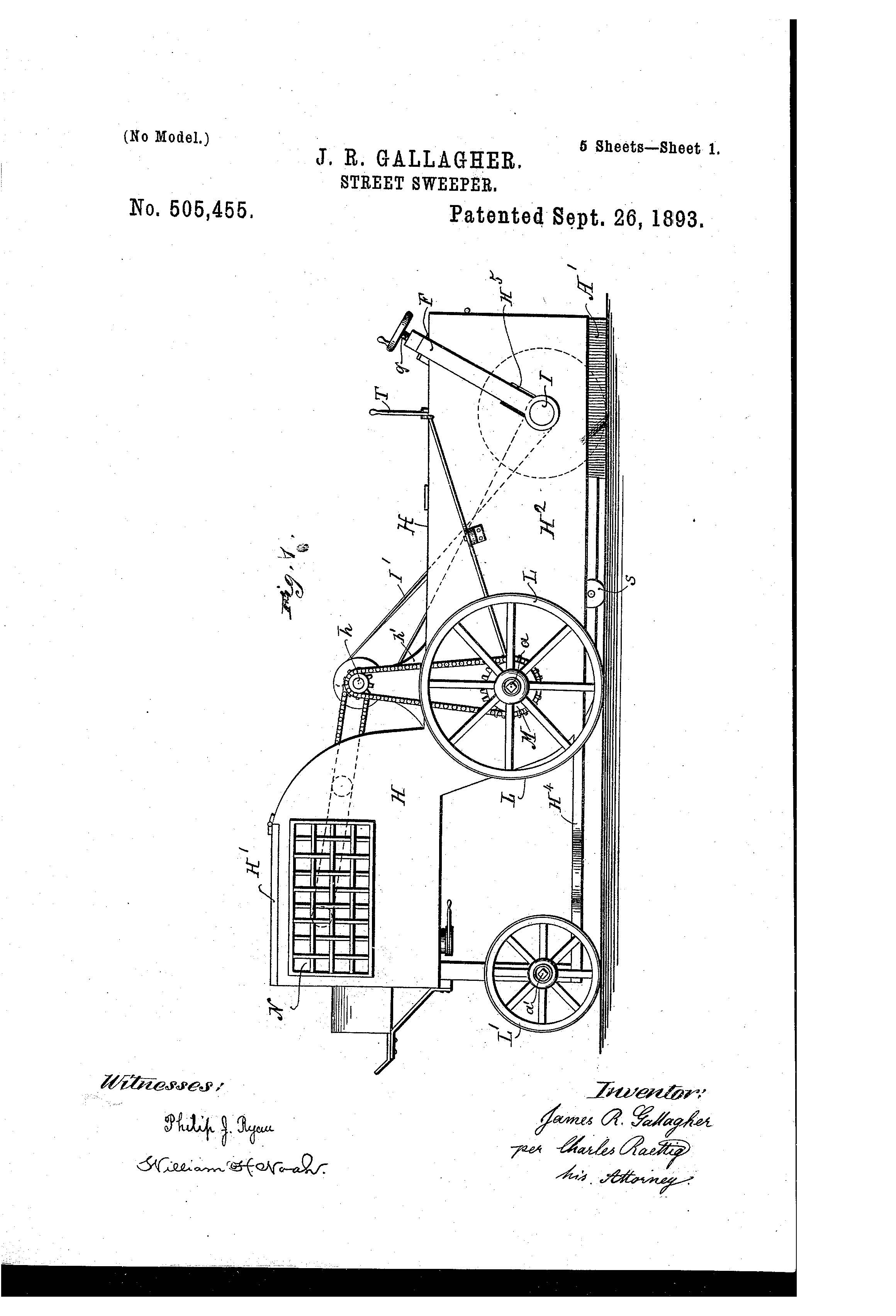
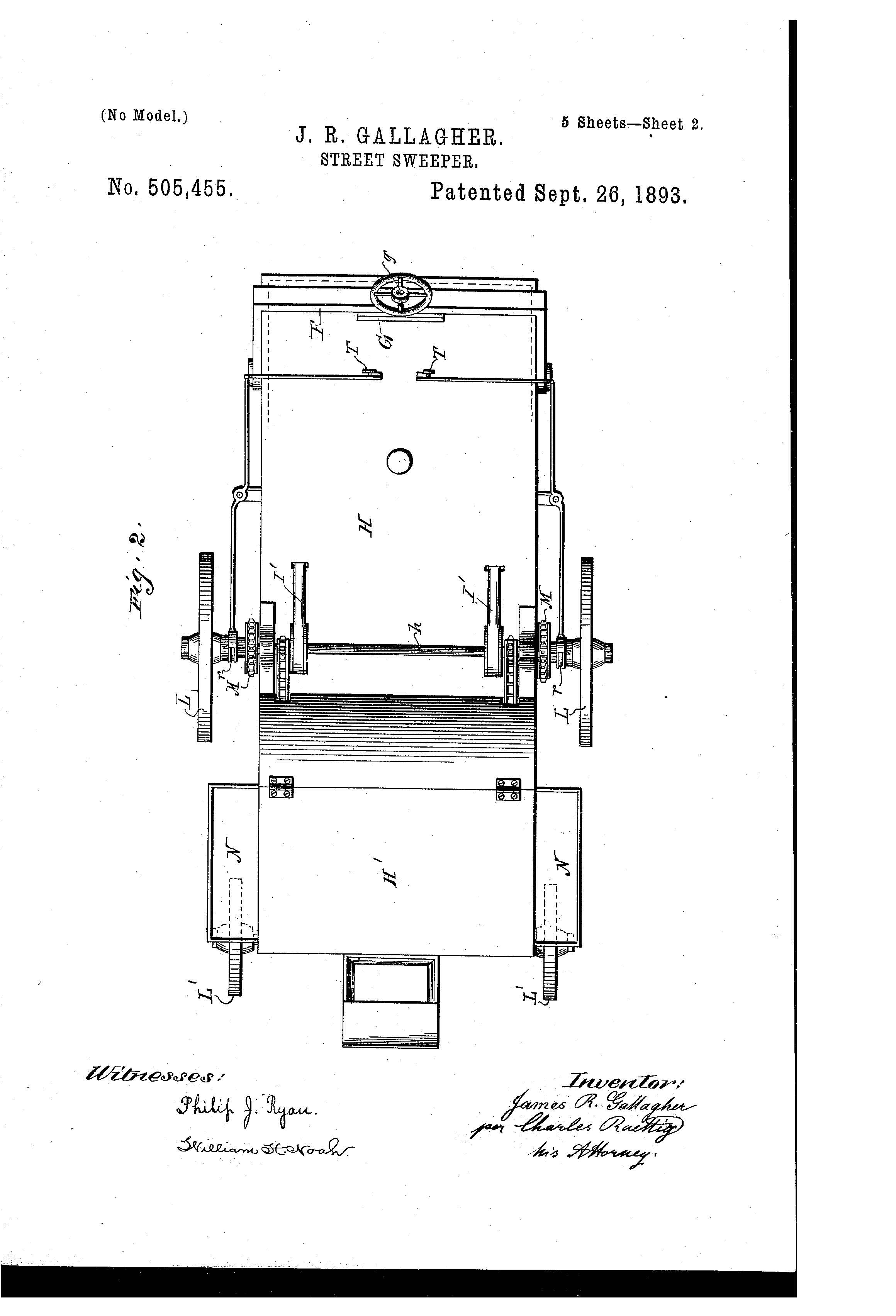
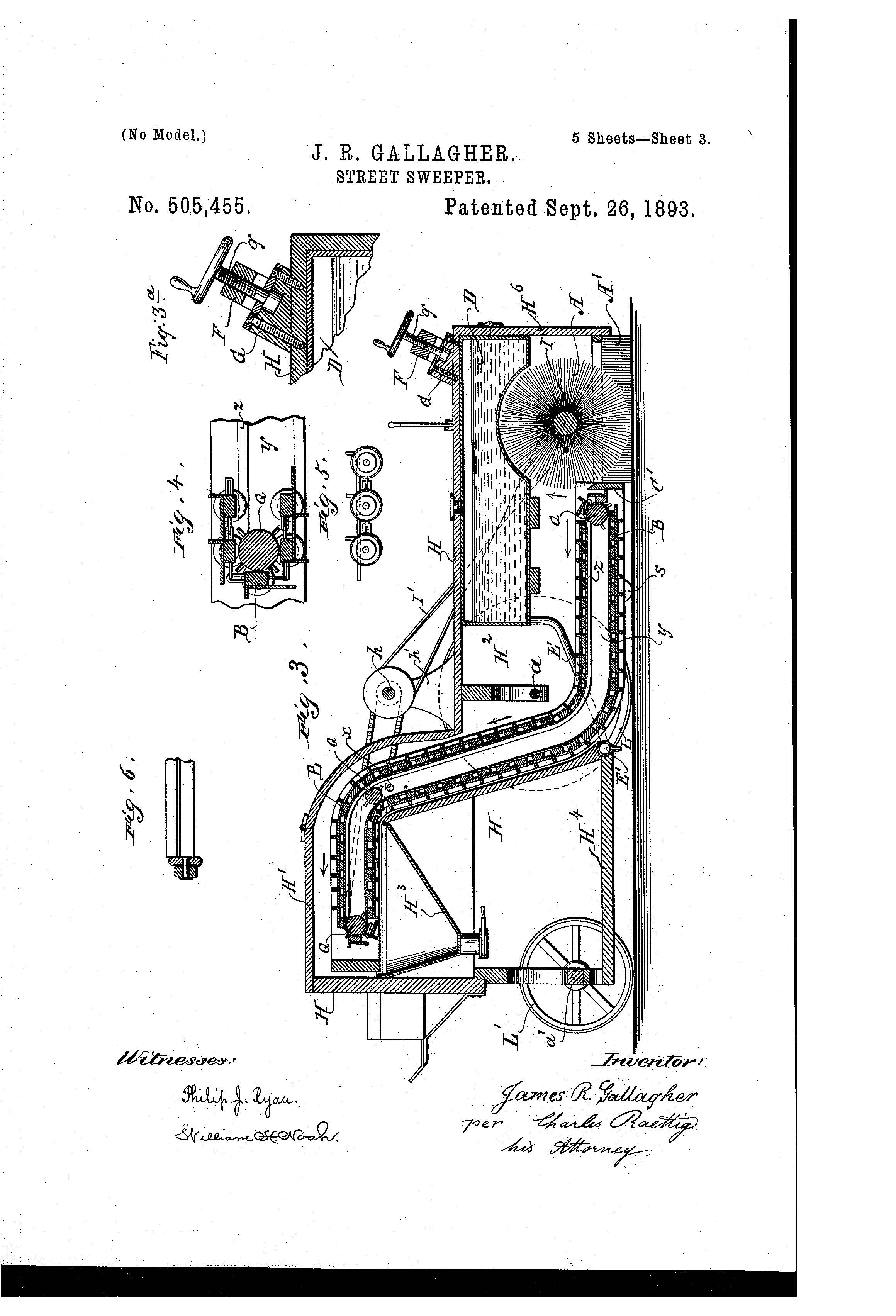

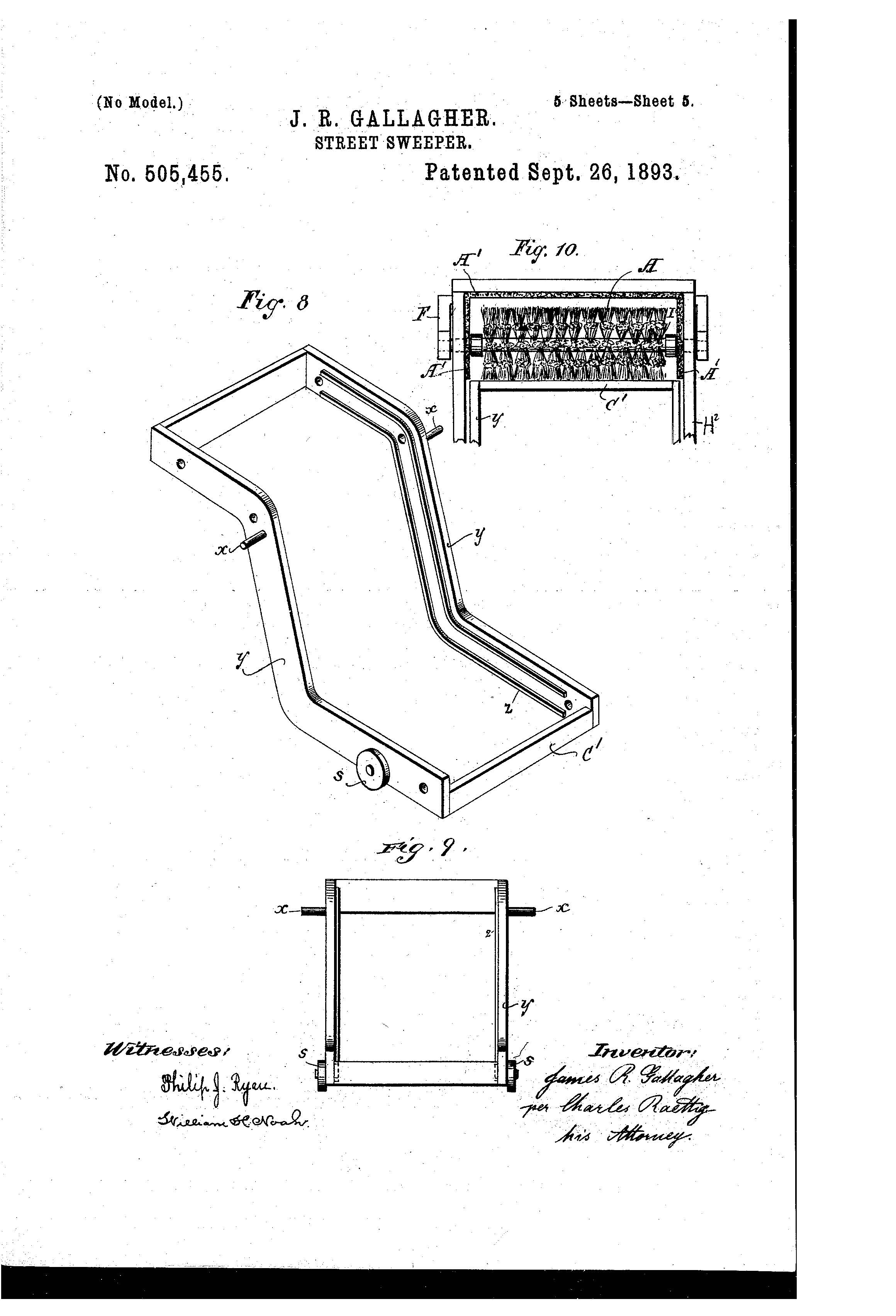
Suiter Swantz IP is a full-service intellectual property law firm, based in Omaha, NE, serving all of Nebraska, Iowa and South Dakota. If you have any intellectual property questions or need assistance with any patent, trademark, or copyright matters and would like to speak to one of our patent attorneys please contact us.

